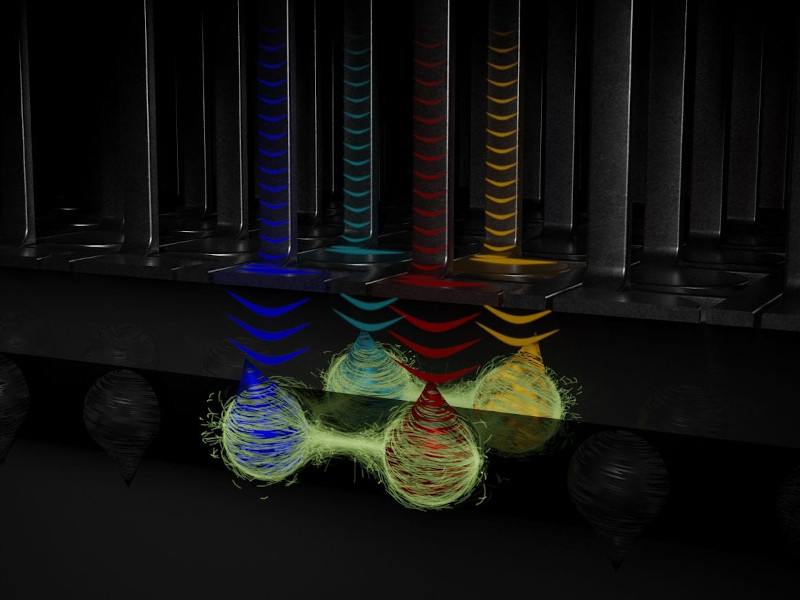Quantum computing represents a paradigm shift in computational capabilities, offering a tantalizing glimpse into a future where calculations are executed with unprecedented speed and efficiency. At the heart of this technological revolution lies the concept of scalable quantum computer technology, a critical area of research that aims to develop quantum systems capable of handling a vast array of complex problems far beyond the reach of classical computers.
Scalability in quantum computing pertains to the ability to increase the number of qubits—quantum bits—within a quantum system without incurring prohibitive costs or diminishing performance. This challenge is multifaceted, encompassing various aspects of quantum hardware, error correction, and algorithms. Understanding each component is essential for grasping the significance of scalable quantum technology.
1. Quantum Bits: The Building Blocks
At the core of quantum computing are qubits, which differ profoundly from classical bits. In classical computation, bits exist in a binary state of either 0 or 1. In contrast, qubits can exist simultaneously in multiple states due to the principles of superposition and entanglement. This characteristic exponentially increases the processing power of quantum computers as multiple calculations can be performed concurrently.
For scalability, it is crucial to develop qubits that can be easily integrated and scaled up in number. Various physical implementations of qubits are currently being explored, including superconducting circuits, trapped ions, topological qubits, and photonic qubits. Each design presents unique advantages and challenges, particularly regarding coherence time—the duration for which a qubit maintains its quantum state—which is vitally important for executing complex algorithms reliably.
2. Error Correction Codes: Ensuring Fidelity
Quantum systems are inherently susceptible to noise and decoherence, which can lead to errors in computation. As the number of qubits increases, so does the likelihood of error occurrence, which poses a significant challenge to the scalability of quantum computations. Quantum error correction codes are indispensable for maintaining the integrity of quantum information.
One established error correction framework is the surface code, which offers high fault tolerance. The surface code operates by encoding logical qubits into a grid of physical qubits, enabling errors to be detected and corrected without directly measuring the qubits themselves. Advanced error correction techniques are vital for achieving practical scalability, as they facilitate longer processing times and more complex computations without degradation of the quantum state.
3. Quantum Algorithms: Unleashing Processing Power
The potential of scalable quantum technology is most vividly illustrated through quantum algorithms. Shor’s algorithm for factoring large integers and Grover’s algorithm for database searching are among the most notable examples, demonstrating the potential for quantum computers to outperform classical counterparts significantly.
As scalability improves, the development of novel algorithms tailored to harness the power of larger quantum systems becomes necessary. Quantum machine learning algorithms, optimization problems, and simulations of complex quantum systems are promising areas where scalable quantum technology could revolutionize industries such as pharmaceuticals, logistics, and cryptography.
4. Quantum Hardware: Towards Integration
Hardware development is a crucial component of scalability. The race towards building a functional quantum computer that can sustain a large number of qubits without performance loss drives research in various fields, including materials science and nanoengineering. Innovations in quantum chips, cryogenic technology, and integration techniques are necessary to support an increased qubit count.
For example, superconducting qubits require cryogenic environments to function, necessitating intricate cooling systems to achieve operational temperatures. As the need for scalability grows, so does the imperative for holistic designs that unify quantum processors with control electronics, fostering efficiencies and minimizing error rates.
5. Quantum Networks: The Future of Quantum Communication
Scalable quantum computing technology will not only enhance computational power but also pave the way for quantum networks. These networks would enable secure communication through quantum key distribution (QKD), leveraging the principles of quantum mechanics to provide impeccable data security that is theoretically impervious to eavesdropping.
By expanding the number of qubits, we can generate complex quantum states that, when interconnected through a quantum network, could facilitate quantum teleportation and distributed quantum computing—concepts that could redefine how information is shared and processed across vast distances.
6. Challenges and Future Directions
Despite the exciting prospects, several daunting challenges remain in achieving scalable quantum computing technology. Issues such as qubit cross-talk, error propagation, and the physical limitations of materials used in qubit construction demand innovative solutions. Additionally, the economic implications of scaling quantum technology necessitate a balance between investment in research and the practicalities of manufacturing and deployment.
Future research is likely to emphasize hybrid models that combine classical and quantum computing capabilities, quantum cloud computing services that allow broader access to quantum resources, and further developments in quantum error correction methods. Interdisciplinary collaboration among physicists, computer scientists, and engineers will be pivotal in overcoming the obstacles to scalable quantum computing.
In conclusion, scalable quantum computer technology stands at the forefront of scientific inquiry, promising to unlock computational abilities that have hitherto remained the realm of theoretical exploration. The integration of advanced qubits, robust error correction, innovative algorithms, state-of-the-art hardware, and evolution towards quantum networking collectively comprise the intricate landscape towards realizing widespread quantum computational prowess. The pursuit of this technology, while fraught with challenges, holds the potential to revolutionize not only computing but also the fabric of modern society.












